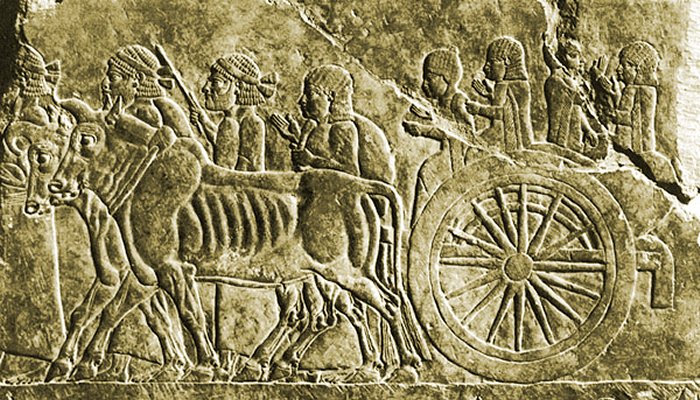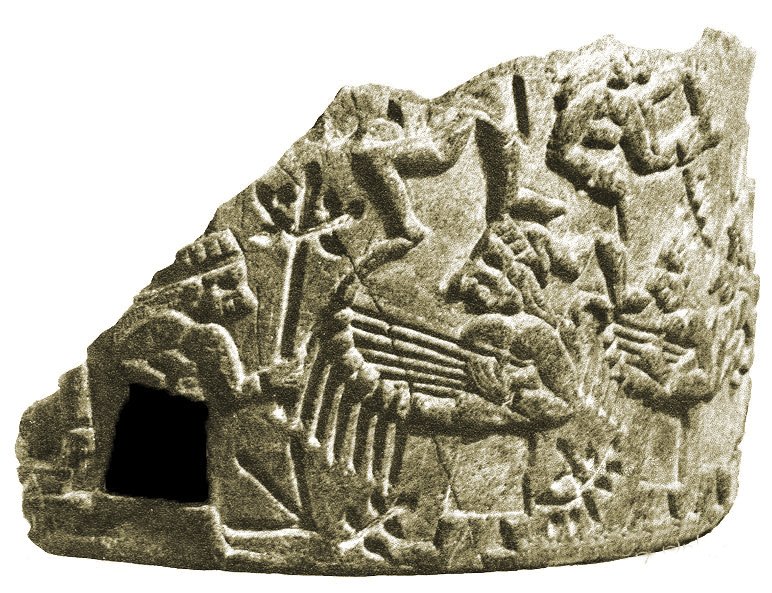A. Sutherland - AncientPages.com - Lugal-anne-mundu (Lugalannemundu) (ca. 25th century BC) was a powerful king and a great leader, who restored Sumer to its former glory.
His influence spread over a great number of territories from the Persian Gulf to the Mediterranean, neighboring the Taurus mountains in the north, and the Zagros mountains in the east.

Excavations revealed the remains of buildings, walls, graves and a large number of inscribed clay, bronze and stone tablets, alabaster, onyx, porphyry and granite, vases in marble, some of which were inscribed, and others engraved and inlaid with ivory and precious stones.
According to the Sumerian King List, Lugal-anne-mundu ruled about 2400 BC and for the period of ninety years. He received the kingship following the fall of the Second Dynasty at Ur.
He was only one king ascribed to the Sumerian city-state Adab (modern Bismāyah) located south of Nippur, Iraq.

The principal deity of the city was the goddess Ninhursag, known not only as the goddess of animal birth but the Mother of All Children, a mother-goddess figure.
There are few authentic contemporary inscriptions for Lugal-Anne-Mundu's reign; he is known mainly from a much later text, probably copied from one of his inscriptions, and unearthed during excavations 1903-04.
In this document, Lugal-anne-mundu - described as "King of the universe" or 'King of the four quarters of the Universe' - was an accomplished military leader and strategist.
He managed to capture vast territories and was able to make all foreign lands pay tribute to him and finally brought peace. Lugal-Anne-Mundu’s empire, which is believed to be the first in recorded history, collapsed upon his death.
A series of excavations conducted by the American archaeologist Edgar James Banks in 1903–04, exposed ancient ruins of Adab city dating from as early as the prehistoric period and as late as the reign of Ur-Nammu (reigned 2112–2095 BC).
The city of Adab was divided into two parts by a canal, on an island in which stood the temple, E-mach, with a ziggurat, or stepped tower. Archaeologists unearthed artifacts dated to Sargon of Akkad, ca. 2300 BC.
Further deep down, they found the remains of buildings, walls, graves and a large number of inscribed clay, bronze and stone tablets, alabaster, onyx, porphyry and granite, vases in marble, some of which were inscribed, and others engraved and inlaid with ivory and precious stones.
"...All were polished, some were engraved with a simple design; others were elaborately wrought with the figures of men and of animals... Others were inscribed with the name of the temple or of an unknown king...." wrote Edgar James Banks, who excavated the area of ancient Adab (now Bismaya or Bismya, Iraq).
Written by – A. Sutherland AncientPages.com Staff Writer
Copyright © AncientPages.com All rights reserved. This material may not be published, broadcast, rewritten or redistributed in whole or part without the express written permission of AncientPages.com
Expand for referencesOlmstead, A. T. "The Political Development of Early Babylonia." The American Journal of Semitic Languages and Literatures 33, no. 4 (1917): 283-321.






